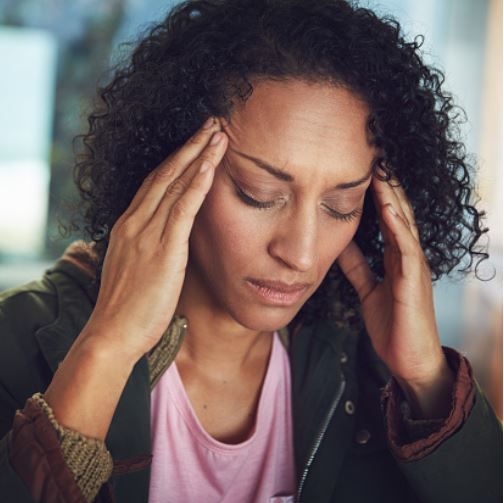User login
TOPLINE:
new results from large, real-world analysis of self-reported patient data show.
METHODOLOGY:
- Researchers analyzed nearly 11 million migraine attack records extracted from Migraine Buddy, an e-diary smartphone app, over a 6-year period.
- They evaluated self-reported treatment effectiveness for 25 acute migraine medications among seven classes: acetaminophen, NSAIDs, triptans, combination analgesics, ergots, antiemetics, and opioids.
- A two-level nested multivariate logistic regression model adjusted for within-subject dependency and for concomitant medications taken within each analyzed migraine attack.
- The final analysis included nearly 5 million medication-outcome pairs from 3.1 million migraine attacks in 278,000 medication users.
TAKEAWAY:
- Using ibuprofen as the reference, triptans, ergots, and antiemetics were the top three medication classes with the highest effectiveness (mean odds ratios [OR] 4.80, 3.02, and 2.67, respectively).
- The next most effective medication classes were opioids (OR, 2.49), NSAIDs other than ibuprofen (OR, 1.94), combination analgesics acetaminophen/acetylsalicylic acid/caffeine (OR, 1.69), and others (OR, 1.49).
- Acetaminophen (OR, 0.83) was considered to be the least effective.
- The most effective individual medications were eletriptan (Relpax) (OR, 6.1); zolmitriptan (Zomig) (OR, 5.7); and sumatriptan (Imitrex) (OR, 5.2).
IN PRACTICE:
“Our findings that triptans, ergots, and antiemetics are the most effective classes of medications align with the guideline recommendations and offer generalizable insights to complement clinical practice,” the authors wrote.
SOURCE:
The study, with first author Chia-Chun Chiang, MD, Department of Neurology, Mayo Clinic, Rochester, Minnesota, was published online November 29 in Neurology.
LIMITATIONS:
The findings are based on subjective user-reported ratings of effectiveness and information on side effects, dosages, and formulations were not available. The newer migraine medication classes, gepants and ditans, were not included due to the relatively lower number of treated attacks. The regression model did not include age, gender, pain intensity, and other migraine-associated symptoms, which could potentially affect treatment effectiveness.
DISCLOSURES:
Funding for the study was provided by the Kanagawa University of Human Service research fund. A full list of author disclosures can be found with the original article.
A version of this article first appeared on Medscape.com.
TOPLINE:
new results from large, real-world analysis of self-reported patient data show.
METHODOLOGY:
- Researchers analyzed nearly 11 million migraine attack records extracted from Migraine Buddy, an e-diary smartphone app, over a 6-year period.
- They evaluated self-reported treatment effectiveness for 25 acute migraine medications among seven classes: acetaminophen, NSAIDs, triptans, combination analgesics, ergots, antiemetics, and opioids.
- A two-level nested multivariate logistic regression model adjusted for within-subject dependency and for concomitant medications taken within each analyzed migraine attack.
- The final analysis included nearly 5 million medication-outcome pairs from 3.1 million migraine attacks in 278,000 medication users.
TAKEAWAY:
- Using ibuprofen as the reference, triptans, ergots, and antiemetics were the top three medication classes with the highest effectiveness (mean odds ratios [OR] 4.80, 3.02, and 2.67, respectively).
- The next most effective medication classes were opioids (OR, 2.49), NSAIDs other than ibuprofen (OR, 1.94), combination analgesics acetaminophen/acetylsalicylic acid/caffeine (OR, 1.69), and others (OR, 1.49).
- Acetaminophen (OR, 0.83) was considered to be the least effective.
- The most effective individual medications were eletriptan (Relpax) (OR, 6.1); zolmitriptan (Zomig) (OR, 5.7); and sumatriptan (Imitrex) (OR, 5.2).
IN PRACTICE:
“Our findings that triptans, ergots, and antiemetics are the most effective classes of medications align with the guideline recommendations and offer generalizable insights to complement clinical practice,” the authors wrote.
SOURCE:
The study, with first author Chia-Chun Chiang, MD, Department of Neurology, Mayo Clinic, Rochester, Minnesota, was published online November 29 in Neurology.
LIMITATIONS:
The findings are based on subjective user-reported ratings of effectiveness and information on side effects, dosages, and formulations were not available. The newer migraine medication classes, gepants and ditans, were not included due to the relatively lower number of treated attacks. The regression model did not include age, gender, pain intensity, and other migraine-associated symptoms, which could potentially affect treatment effectiveness.
DISCLOSURES:
Funding for the study was provided by the Kanagawa University of Human Service research fund. A full list of author disclosures can be found with the original article.
A version of this article first appeared on Medscape.com.
TOPLINE:
new results from large, real-world analysis of self-reported patient data show.
METHODOLOGY:
- Researchers analyzed nearly 11 million migraine attack records extracted from Migraine Buddy, an e-diary smartphone app, over a 6-year period.
- They evaluated self-reported treatment effectiveness for 25 acute migraine medications among seven classes: acetaminophen, NSAIDs, triptans, combination analgesics, ergots, antiemetics, and opioids.
- A two-level nested multivariate logistic regression model adjusted for within-subject dependency and for concomitant medications taken within each analyzed migraine attack.
- The final analysis included nearly 5 million medication-outcome pairs from 3.1 million migraine attacks in 278,000 medication users.
TAKEAWAY:
- Using ibuprofen as the reference, triptans, ergots, and antiemetics were the top three medication classes with the highest effectiveness (mean odds ratios [OR] 4.80, 3.02, and 2.67, respectively).
- The next most effective medication classes were opioids (OR, 2.49), NSAIDs other than ibuprofen (OR, 1.94), combination analgesics acetaminophen/acetylsalicylic acid/caffeine (OR, 1.69), and others (OR, 1.49).
- Acetaminophen (OR, 0.83) was considered to be the least effective.
- The most effective individual medications were eletriptan (Relpax) (OR, 6.1); zolmitriptan (Zomig) (OR, 5.7); and sumatriptan (Imitrex) (OR, 5.2).
IN PRACTICE:
“Our findings that triptans, ergots, and antiemetics are the most effective classes of medications align with the guideline recommendations and offer generalizable insights to complement clinical practice,” the authors wrote.
SOURCE:
The study, with first author Chia-Chun Chiang, MD, Department of Neurology, Mayo Clinic, Rochester, Minnesota, was published online November 29 in Neurology.
LIMITATIONS:
The findings are based on subjective user-reported ratings of effectiveness and information on side effects, dosages, and formulations were not available. The newer migraine medication classes, gepants and ditans, were not included due to the relatively lower number of treated attacks. The regression model did not include age, gender, pain intensity, and other migraine-associated symptoms, which could potentially affect treatment effectiveness.
DISCLOSURES:
Funding for the study was provided by the Kanagawa University of Human Service research fund. A full list of author disclosures can be found with the original article.
A version of this article first appeared on Medscape.com.

